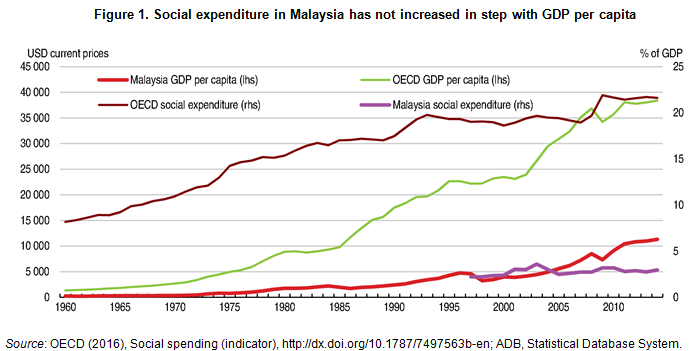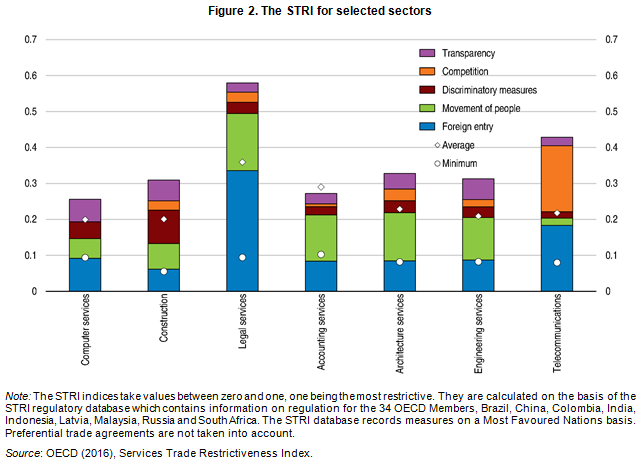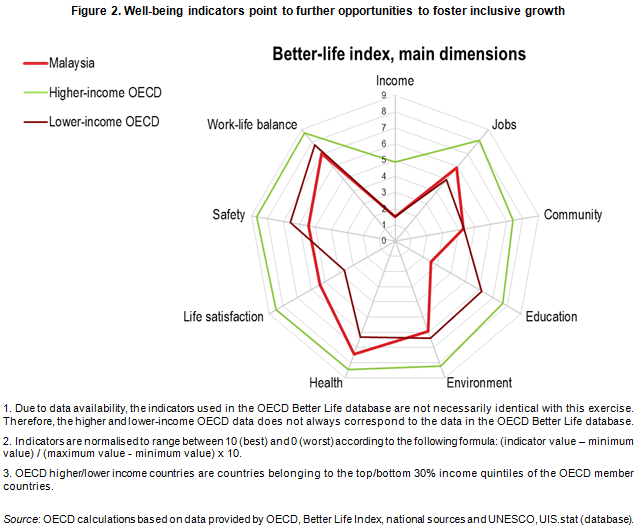Malaysia: Five takeaways from the new OECD Economic Survey
By Patrick Lenain and Kosuke Suzuki, OECD Economics Department
Like many countries around the world, Malaysia has been hit hard by COVID-19. Stringent restrictions have constrained consumer spending, while the global recession have reduced exports. The Malaysian government reacted swiftly to support growth. Since February 2020, it has rolled out nine fiscal stimulus packages, amounting to more than 35% of GDP. Monetary policy has also been eased, and measures introduced to restore credit flows. Moreover, the government has made great progress with its vaccination campaign, and this should remain the priority. Thanks to these policies, the economy is projected to resume fast economic growth (Figure 1). The OECD Economic Survey of Malaysia 2021 says that Malaysia should continue its reforms to remain a business-friendly country and achieve strong, inclusive and clean growth.

After the pandemic, well-functioning markets will be crucial to boost the economy. Malaysia is open to investment and entrepreneurship, but new data collected for the Economic Survey points to regulation that impede several activities. The new OECD Product Market Regulation Indicators for Malaysia show that barriers to competition hinder market entry in the sectors of energy and transport (Figure 2), professional services and retail trade. Moreover, starting a new business remains challenging due to the multiple licenses and permits required by various levels of government. Easing these regulations would spur productivity growth, business dynamism and innovation in Malaysia.

To make growth more inclusive after the pandemic, social policies will also be crucial. Many workers have been affected by the crisis and unemployment remains high. Government support to affected households should thus remain in place until the recovery is well established. Government policies should focus especially on women, young people, and lower-skilled workers. Women often have no other choice than to join the labour market as self-employed (Figure 3), and they have been hit by the tight restrictions in the sectors of tourism and retail trade, putting them at risk of poverty. Platform workers, whose number is increasing fast with the spread of digitalisation, are generally self-employed and also in a precarious position. Therefore, strengthening social protection is of utmost importance.

Additional government revenue will be needed to enhance social protection without further increasing public debt. Malaysia’s tax revenue is low (Figure 4) and has declined for years, making tax reform essential. Tax revenue will also be required to protect Malaysia’s fast-ageing population. According to a UN projection, the old-age dependency rate (+65/15-64) of Malaysia will reach 25% by 2050, more than twice the current 10%. Encouraging more elderly people to stay longer in the labour force would also be useful to help reduce old-age income poverty and raise government revenue.

The post-pandemic recovery also needs to focus on cleaner energy. As the latest IPCC report depicts, immediate, rapid and large-scale reductions in greenhouse gas emissions are now strongly called for at the global level. Malaysia has made steady progress in reducing its carbon emissions intensity during the past two decades. However, fast economic growth has translated into higher volumes of greenhouse gas emissions (Figure 5). The return to strong economic growth after the pandemic should not once again result in fast-rising carbon emissions. The Economic Survey encourages Malaysia to reduce the use of coal in electricity production, increase renewable energy production, increase domestic carbon prices, improve forest management, and support biodiversity. These objectives are all essential for Malaysia’s greener post-pandemic recovery.

Reference:
OECD (2021), OECD Economic Surveys: Malaysia 2021, OECD Publishing, Paris, https://doi.org/10.1787/cc9499dd-en.








